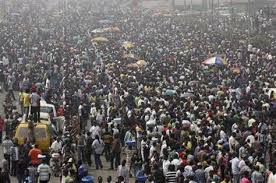In the late 1980s, one Frank Olize of NTA Newsline set out in search of the common man in Nigeria. The search took in to several towns across the country in search of that one man who is a common man. But to the dismay of Frank every Nigeria on the street saw himself as a common man. In the end Frank return to his base with the conclusion that the search will continue. He never found the Nigerian common man.
But the same seems to be the issue with who is poor in Nigeria. Nearly every man on the street today claimed to be poor and would need one form of assistance or the other. In 2012 when the National Bureau of Statistics conducted a survey on poverty in Nigeria, nearly all those spoken to in the survey claimed they were poor. The Bureau came out with a figure of 112 million Nigerians in the poverty line out of a population of 170 million.
Nations also claim they are poor. When in 1961 Frantz Fanon wrote The Wretched of the Earth it was received by Africans as an epic master piece reflecting the poverty inflicted on the continent by colonizers. It was a psychiatric and psychologic analysis of the dehumanising effects of colonisation upon the individual, and the nation, from which derive the broader social, cultural, and political implications inherent to establishing a social movement for the decolonisation of a person and of a people. In his introduction to the 1961 edition of The Wretched of the Earth, the philosopher Jean-Paul Sartre supported Frantz Fanon’s advocacy of justified violence by the colonized people against the foreign colonizer, as necessary for their mental health and political liberation.
The World Bank in its 2015 report on global poverty said that Poverty remains concentrated in Sub-Saharan Africa and South Asia. Last year the bank said that Nigeria will be one of the countries that will be contributing to the growth of poverty by 2030. It said that the concentration of poverty in Sub Sahara Africa is of concern.
The Bank said it used an updated international poverty line of $1.90 a day, which incorporates new information on differences in the cost of living across countries. The new line preserves the real purchasing power of the previous line of $1.25 a day in 2005 prices in the world’s poorest countries. Using this new line as well as new country-level data on living standards, the World Bank projects that global poverty will have fallen from 902 million people or 12.8 per cent of the global population in 2012 to 702 million people, or 9.6 per cent of the global population, this year.
In the new report released in Lima Peru the Bank said “For the last several decades, three regions, East Asia and Pacific, South Asia, and Sub-Saharan Africa, have accounted for some 95 percent of global poverty. Yet, the composition of poverty across these three regions has shifted dramatically. In 1990, East Asia accounted for half of the global poor, whereas some 15 per cent lived in Sub-Saharan Africa; by 2015 forecasts, this is almost exactly reversed: Sub-Saharan Africa accounts for half of the global poor, with some 12 percent living in East Asia. Poverty is declining in all regions but it is becoming deeper and more entrenched in countries that are either conflict ridden or overly dependent on commodity exports.
“The growing concentration of global poverty in Sub-Saharan Africa is of great concern. While some African countries have seen significant successes in reducing poverty, the region as a whole lags the rest of the world in the pace of lessening poverty. Sub-Saharan poverty fell from an estimated 56 percent in 1990 to a projected 35 percent in 2015. Rapid population growth remains a key factor blunting progress in many countries—as this year’s Global Monitoring Report to be launched on October 8 shows.
In its regional forecasts for 2015, the Bank said that poverty in East Asia and the Pacific would fall to 4.1 per cent of its population, down from 7.2 per cent in 2012; Latin America and the Caribbean would fall to 5.6 per cent from 6.2 in 2012; South Asia would fall to 13.5 per cent in 2015, compared to 18.8 per cent in 2012; Sub-Saharan Africa declines to 35.2 per cent in 2015, compared to 42.6 per cent in 2012”. Development has been robust over the last two decades but the protracted global slowdown since the financial crisis of 2008, is beginning to cast its shadow on emerging economies. The economic growth outlook is less impressive for emerging economies in the near future, which will create new challenges in the fight to end poverty and attend to the needs of the vulnerable, especially those living at the bottom 40 percent of their societies.
Using the new poverty line data of $1.9 a day, that is living on about N374 per day how many Nigerians can be said to be poor. The thing is there are many things people do have access to that have not been valued in monetary terms. The farmer who eats from the labour of his farm does not cost the food, the meat, fish, vegetable, the house and the labour of his wife, children who work with him in his farm. But when poverty is being discussed, they will gladly say come out as poor people. The same with the average market women, who make daily sales and keep a garden from where she harvest lots of food stuff. Under normal circumstances these men and women live above the N374 per day bench mark for the poor. Like Frank Olize, the search may not be conclusive after all.

